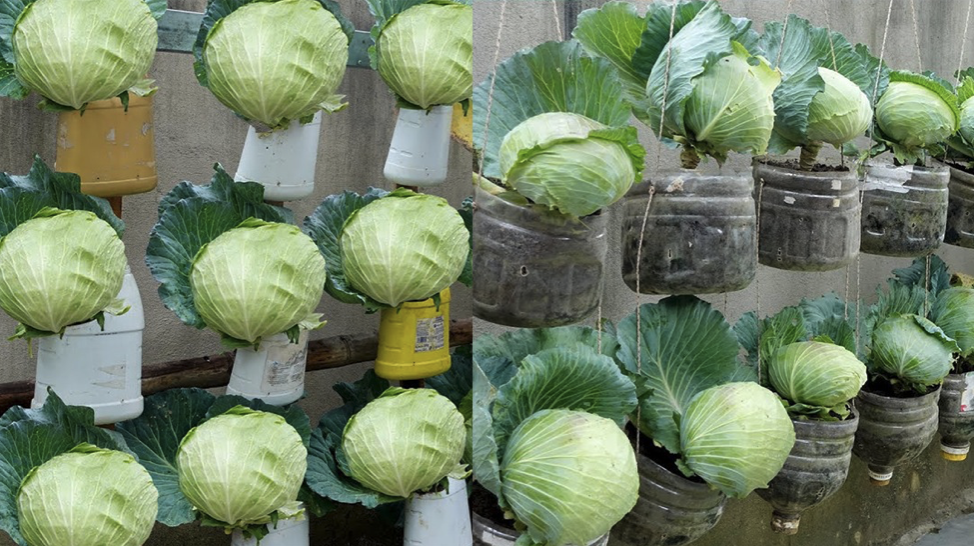Growing Cabbage at Home in Containers: A Guide to Bountiful Harvests

Gardening has never been more accessible, thanks to the growing trend of cultivating vegetables in containers. Whether you have limited space or just want to explore a new gardening method, growing cabbage in large plastic bottles can be a rewarding experience. Cabbage is a versatile and nutritious vegetable that thrives in various climates. In this article, we’ll guide you through the process of successfully growing cabbage at home using containers, specifically repurposed large plastic bottles.
Choosing the Right Container
When selecting containers for growing cabbage, large plastic bottles can be an excellent choice. They are readily available, cost-effective, and can be repurposed to create an eco-friendly gardening solution. Here’s what you’ll need to get started:
- Large Plastic Bottles: 2-liter or larger bottles with the tops cut off make suitable containers. Ensure the bottles are clean and have drainage holes at the bottom to prevent waterlogging.
- Potting Mix: Use a well-draining potting mix rich in organic matter. You can either purchase a commercial mix or create your own by combining compost, peat moss, and perlite.
- Cabbage Seedlings: Opt for young cabbage seedlings from a reputable nursery or start seeds indoors a few weeks before transplanting.
Step-by-Step Guide to Growing Cabbage
1. Prepare the Containers:
- Clean the plastic bottles thoroughly and remove their tops.
- Make drainage holes in the bottom of each bottle to prevent excess water retention.
2. Fill Containers with Potting Mix:
- Fill each plastic bottle about two-thirds full with the potting mix. Gently pat down the soil to remove air pockets.
3. Plant Cabbage Seedlings:
- Dig small holes in the potting mix that are deep enough to accommodate the root balls of your cabbage seedlings.
- Carefully place the seedlings in the holes and cover the roots with soil. Press the soil gently to secure the seedlings in place.
4. Provide Adequate Care:
- Place the containers in a location that receives at least 6 hours of direct sunlight daily.
- Water the cabbage regularly to keep the soil consistently moist but not waterlogged.
- Consider adding a layer of mulch to help retain moisture and prevent weed growth.
- As the cabbage grows, you may need to provide support to prevent the plants from falling over.
5. Fertilization:
- Use a balanced liquid fertilizer every two to three weeks to provide essential nutrients to the cabbage plants.
- Alternatively, mix slow-release granular fertilizer into the potting mix at the beginning of the growing season.
6. Pest and Disease Management:
- Keep an eye out for common cabbage pests like aphids, caterpillars, and slugs. Use organic pest control methods if necessary.
- Maintain good air circulation around the plants to reduce the risk of fungal diseases.
7. Harvesting:
- Cabbage is ready to be harvested when the heads feel firm and have reached the desired size.
- Use a sharp knife to cut the cabbage head just above the soil level.
Conclusion
Growing cabbage at home in containers, especially repurposed large plastic bottles, offers a convenient and efficient way to enjoy fresh, home-grown produce. With proper care and attention, you can savor the satisfaction of cultivating this nutritious vegetable in even the smallest of spaces. Whether you’re an experienced gardener or a beginner, the process of nurturing cabbage from seedlings to harvest is a gratifying journey that contributes to a more sustainable and fulfilling lifestyle.
Do you like this? Share inspiration with your friends!
Source: https://og-oasis.com
DISCLAIMER: THIS WEBSITE DOES NOT PROVIDE MEDICAL ADVICE The information, including but not limited to, text, graphics, images and other material contained on this website are for informational purposes only. The purpose of this website is to promote broad consumer understanding and knowledge of various health topics. It is not intended to be a substitute for professional medical advice, diagnosis or treatment. Always seek the advice of your physician or other qualified health care provider with any questions you may have regarding a medical condition or treatment and before undertaking a new health care regimen, and never disregard professional medical advice or delay in seeking it because of something you have read on this website.
